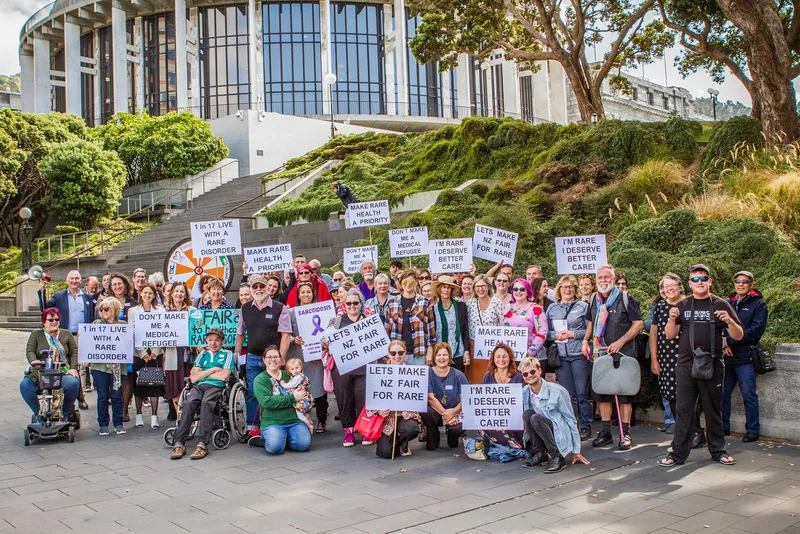Gabrielle's story
28 Feb 2018
Gabrielle was diagnosed with dyskeratosis congenita (DC) in November 2014, at the age of four. Her parents had noticed she bruised easily, took a long time to recover from illness and her skin was yellowish. After initially suspecting leukemia, weeks of blood and bone marrow testing led to a diagnosis of DC.
DC can affect virtually any organ in the body, but primarily organs that need continual regeneration to survive. Gabrielle’s telomeres (the protective caps on the ends of chromosomes) are shortening at a rapid rate, causing her cells to deteriorate faster than other children.
Less than a year after diagnosis, Gabrielle received a bone marrow transplant at Starship from her big brother Lachlan, who was just seven at the time. The family spent two months in isolation in Auckland before they were able to return home to Nelson.
The family, including dad Andrew and big sister Ruby, focuses on a normal routine as much as possible. Gabrielle regularly attends school and works really hard to keep up with her peers, though she tires easily. She enjoys playing summer soccer and has just learned to ride a two-wheeled bicycle.
Gabrielle’s family take extra steps to ensure she is as healthy as possible, including keeping her protected from the sun and ensuring she has a high calorie diet. This normal routine also includes regular dietician and paediatrician appointments, medical checks such as oral, bone density, liver and heart scans, lung function tests, opthamology and eight weekly blood tests.
At school Gabrielle has worked really hard to learn to read and her writing has improved. “It takes a lot of effort and concentration on her part, and we are extremely lucky to have wonderful teachers supporting her every day in her learning to help her be the best that she can,” says her mum Megan.
Gabrielle has several symptoms that require regular hospital and specialist appointments. Her lacrimal ducts are completely closed over which means her tears have nowhere to drain to, so her eyes are constantly tearing. At this stage there are no viable options to correct this, so Gabrielle puts up with constantly leaking eyes.
Gabrielle has nail dystrophy (her nails are pretty much all coming off), which causes her a lot of discomfort and she gets regular infections which are extremely painful. She also has osteopenia (very thin bones) and regularly suffers from joint pain, particularly around the hip, groin, knees and ankles.
The family is grateful for the amazing family support they have as well as support from their local kindy, school and wider community.
“The financial strain of receiving a diagnosis like DC is enormous. Our community fundraised a significant amount of money which meant that I could take time away from work to care for Gabrielle through her transplant; without that support we would have had to consider selling our home,” says Megan.
The community has continued to support Gabrielle and her family through meals, baking, grocery and petrol vouchers, allowing them to focus on supporting their daughter.
Gabrielle just gets on with things and doesn’t let her disease stop her from doing anything she sets her mind to. She almost never complains even when others can clearly see that she is in pain.
“Almost every day Gabrielle amazes us with what she can do. Watching her participate in the school cross country and athletic sports day with a huge smile on her face was a very proud moment for us. Seeing her get certificates at school for perseverance and achievement, knowing how hard she has to work to get there, makes our hearts burst with pride,” says Megan.
The family will be going to the United States in September to attend the bi-annual Dysteratosis Congenita Family Education Summit held at Camp Sunshine in Portland, Maine. They will meet with doctors who specialise in DC and other telomere biology disorders, along with meeting other families experiencing the same challenges. Gabrielle has also been accepted into a research study so will be going to Boston for a day of assessments.


